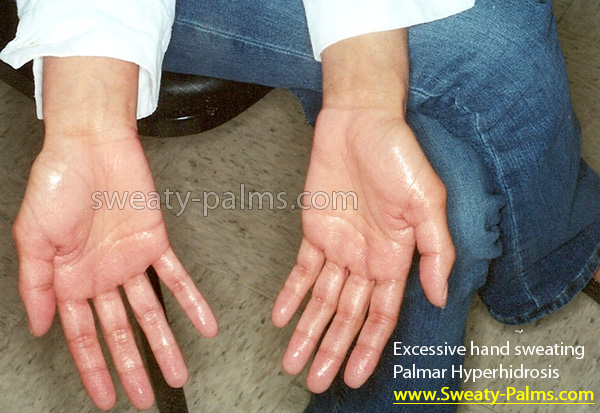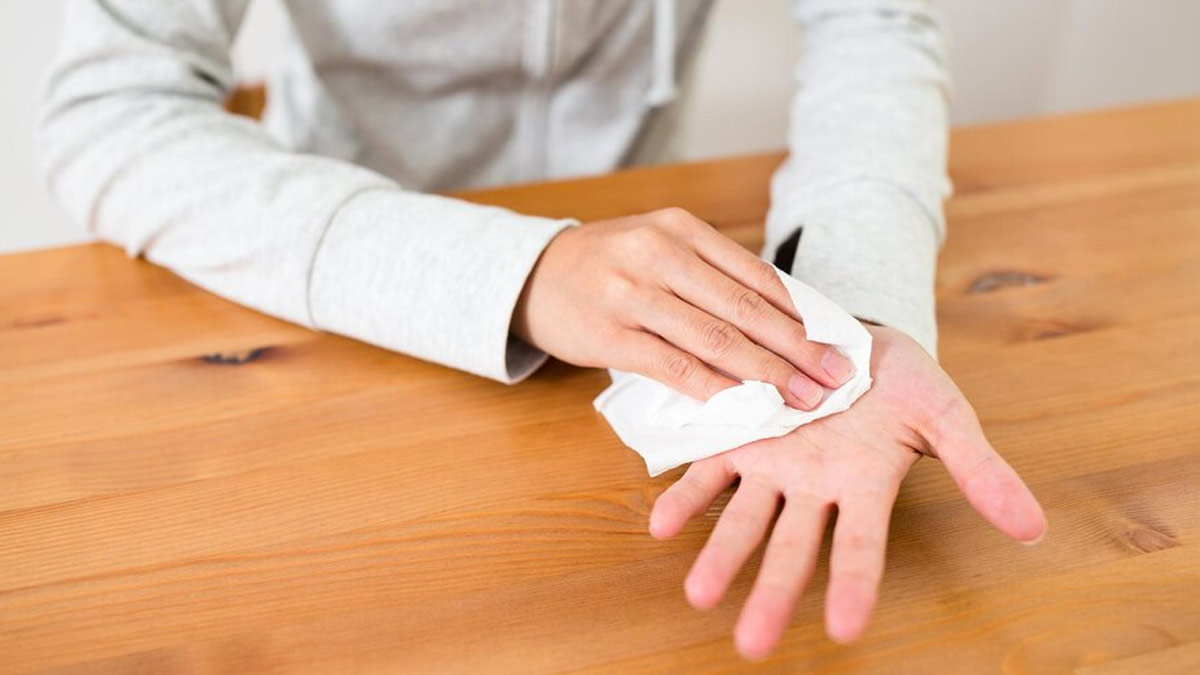How to Stop Sweaty Hands and Feet: Top Dermatology Treatments for Excessive Sweating
How to Stop Sweaty Hands and Feet: Top Dermatology Treatments for Excessive Sweating
Blog Article
Revealing the Intricacies of Excessive Sweating: A Comprehensive Guide to Diagnosis and Administration
Extreme sweating, medically known as hyperhidrosis, is a problem that impacts a substantial variety of individuals and can have a profound impact on their quality of life. While sweating is a natural physical feature, its overactivity in hyperhidrosis provides a special set of difficulties that usually exceed simple pain. Comprehending the underlying reasons, acknowledging the signs and symptoms, and navigating the diagnostic process for hyperhidrosis can be complex jobs. In this thorough guide, we will certainly explore the intricacies of hyperhidrosis, from its diagnosis to the variety of treatment options offered, clarifying effective monitoring strategies for those grappling with this problem.

Comprehending Hyperhidrosis Causes
Hyperhidrosis triggers can be connected to various variables such as genes, hormone imbalances, and specific medical problems. Genetics play a substantial duty in main focal hyperhidrosis, where people acquire the condition from their family participants. By recognizing the details elements contributing to extreme sweating, medical care carriers can customize therapy strategies to attend to the underlying cause, using relief and improving the quality of life for individuals impacted by hyperhidrosis.
Recognizing Hyperhidrosis Manifestations

Additionally, hyperhidrosis signs and symptoms might materialize in emotional and social distress, as individuals might really feel humiliated or nervous regarding their sweating, bring about evasion of social scenarios (Treatment for hyperhydrosis of hands). Additionally, duplicated episodes of extreme sweating can cause skin maceration, fungal infections, and a total decline in self-confidence
Diagnostic Refine for Hyperhidrosis
Starting the analysis procedure for excessive sweating includes comprehensive analysis of the individual's case history and health examination. Inquiring concerning the beginning, duration, and activates of sweating episodes is essential to distinguish between key focal hyperhidrosis and secondary generalized hyperhidrosis. Clinical background ought to also include inquiries regarding medicines, clinical conditions, and family history of hyperhidrosis.
During the physical exam, certain attention is paid to the areas affected by sweating. The health care provider might assess the extent of sweating, check for indications of underlying problems, and review the impact of sweating on the person's lifestyle. Additionally, certain examinations like the gravimetric test, starch-iodine test, or skin conductance measurements might be performed to quantify the amount of sweat generated.
Additionally, in instances where second hyperhidrosis is believed, additional examinations such as blood tests, pee tests, and imaging studies might be recommended to identify the underlying root cause of too much sweating. The diagnostic procedure intends to properly identify the type and reason for hyperhidrosis to assist appropriate monitoring approaches.
Treatment Alternatives for Hyperhidrosis
When dealing with too much sweating, various therapy alternatives are readily available to reduce symptoms and enhance the person's high quality of life. The treatment strategy for hyperhidrosis depends on the intensity of signs and the client's action to first therapies.
Topical therapies, such as aluminum-based antiperspirants, are typically recommended as the very check out here first line of protection for managing mild instances of hyperhidrosis. For people with much more serious symptoms, dental medicines like anticholinergics might be recommended to aid lower sweating.

Effective Management Strategies
To efficiently handle hyperhidrosis, a detailed and personalized treatment plan tailored to the patient's specific demands and feedback to previous treatments is crucial. This strategy might integrate a combination of therapeutic approaches, consisting of way of living adjustments, topical treatments, oral drugs, botulinum contaminant shots, iontophoresis, and in severe cases, medical treatments like sweat gland removal or sympathectomy. Way of living adjustments such as using moisture-wicking clothing, making use of antiperspirants, and exercising stress-reducing next techniques can complement use this link clinical interventions. Topical antiperspirants containing light weight aluminum chloride are commonly the first-line treatment, with more powerful formulas available for immune situations. Oral drugs like anticholinergics may be prescribed for generalised hyperhidrosis. Botulinum toxin injections work for focal hyperhidrosis, giving momentary relief by obstructing the release of acetylcholine. Iontophoresis, entailing the use of a reduced electrical existing to minimize sweat gland task, can be advantageous for both palmoplantar and axillary hyperhidrosis. Surgical alternatives are normally reserved for extreme, refractory cases and call for careful consideration of advantages and risks. A multidisciplinary technique involving skin doctors, primary care physicians, and, if needed, cosmetic surgeons, can maximize the management of hyperhidrosis.
Conclusion
In final thought, hyperhidrosis is a problem identified by excessive sweating, which can considerably influence a person's top quality of life. By recognizing the reasons, recognizing the symptoms, and undergoing the diagnostic process, doctor can properly handle this problem. Therapy alternatives consist of topical medicines, dental medicines, injections, and even surgical procedures in severe cases. With correct medical diagnosis and monitoring approaches, people experiencing hyperhidrosis can discover relief and improve their overall well-being.
Excessive sweating, clinically recognized as hyperhidrosis, is a condition that affects a substantial number of people and can have a profound influence on their quality of life. By recognizing the certain elements contributing to excessive sweating, medical care providers can tailor therapy plans to address the underlying cause, supplying relief and boosting the high quality of life for individuals influenced by hyperhidrosis.
Hyperhidrosis, defined by too much sweating beyond what is necessary for controling body temperature, can dramatically impact a person's quality of life. Making inquiries regarding the start, duration, and causes of sweating episodes is important to differentiate between key focal hyperhidrosis and additional generalised hyperhidrosis. Sweaty hands treatment.In conclusion, hyperhidrosis is a condition identified by excessive sweating, which can considerably impact an individual's top quality of life
Report this page